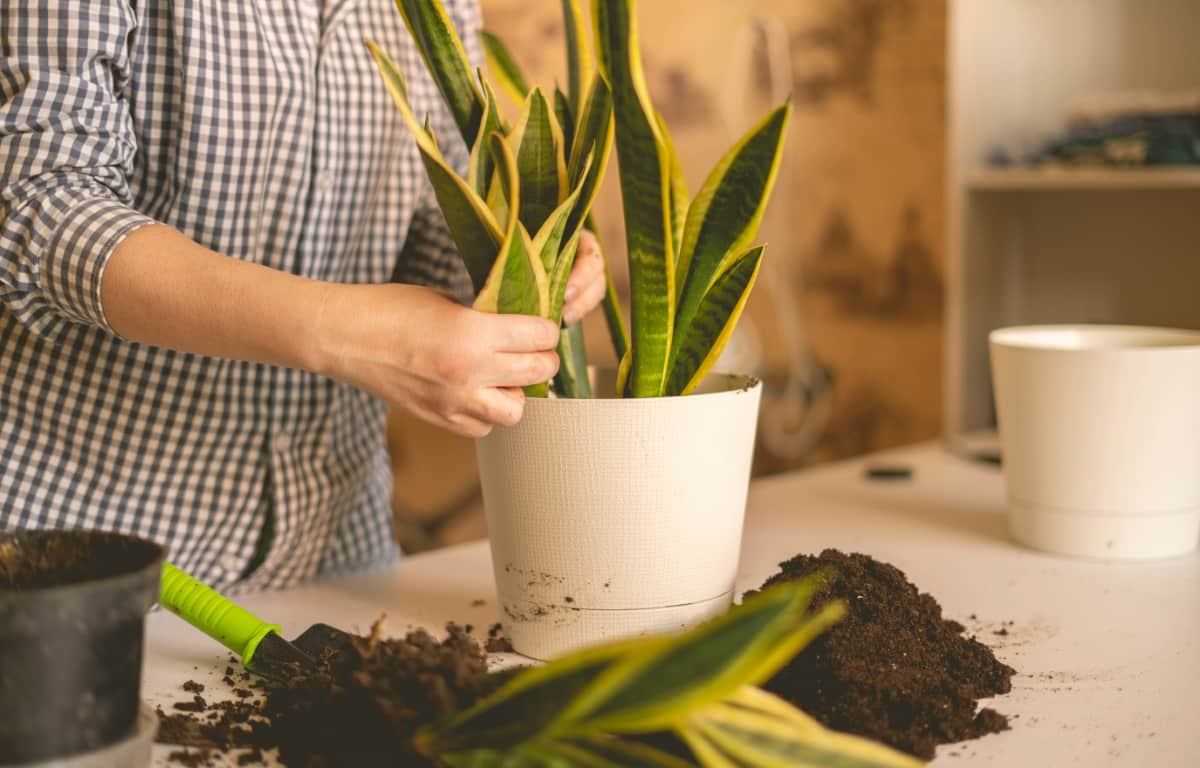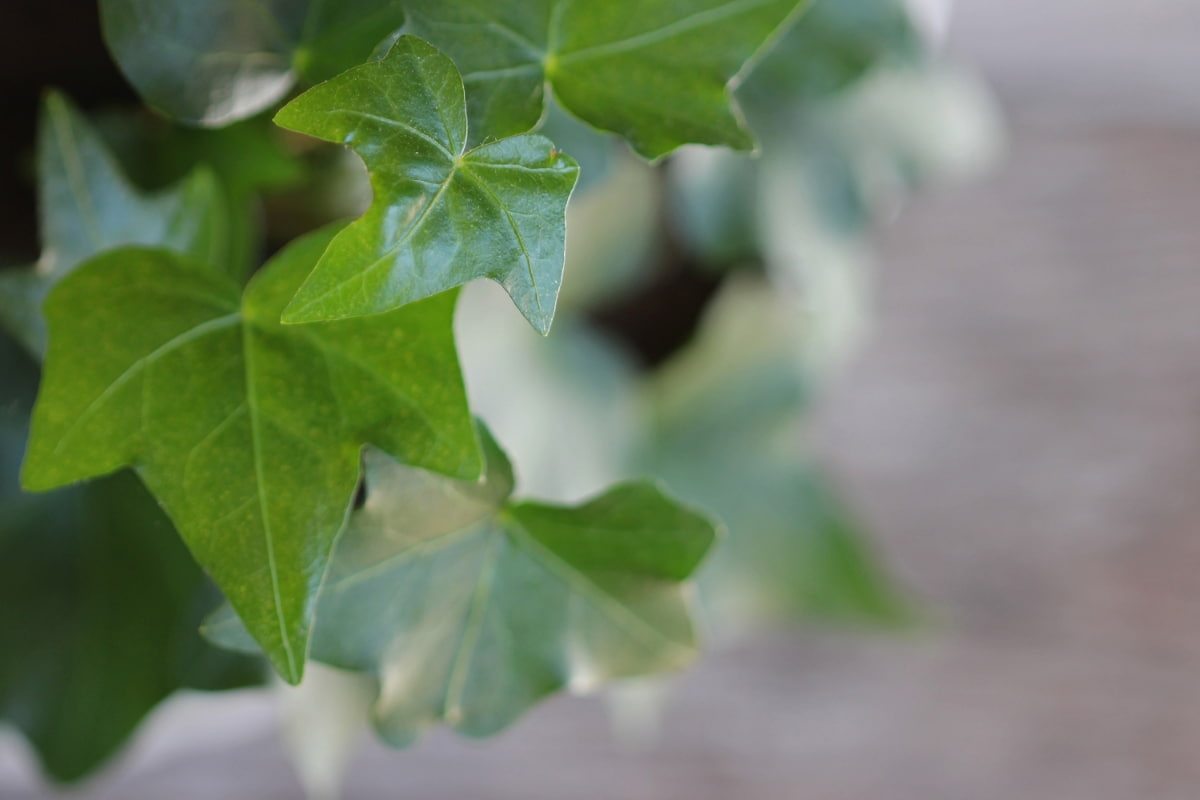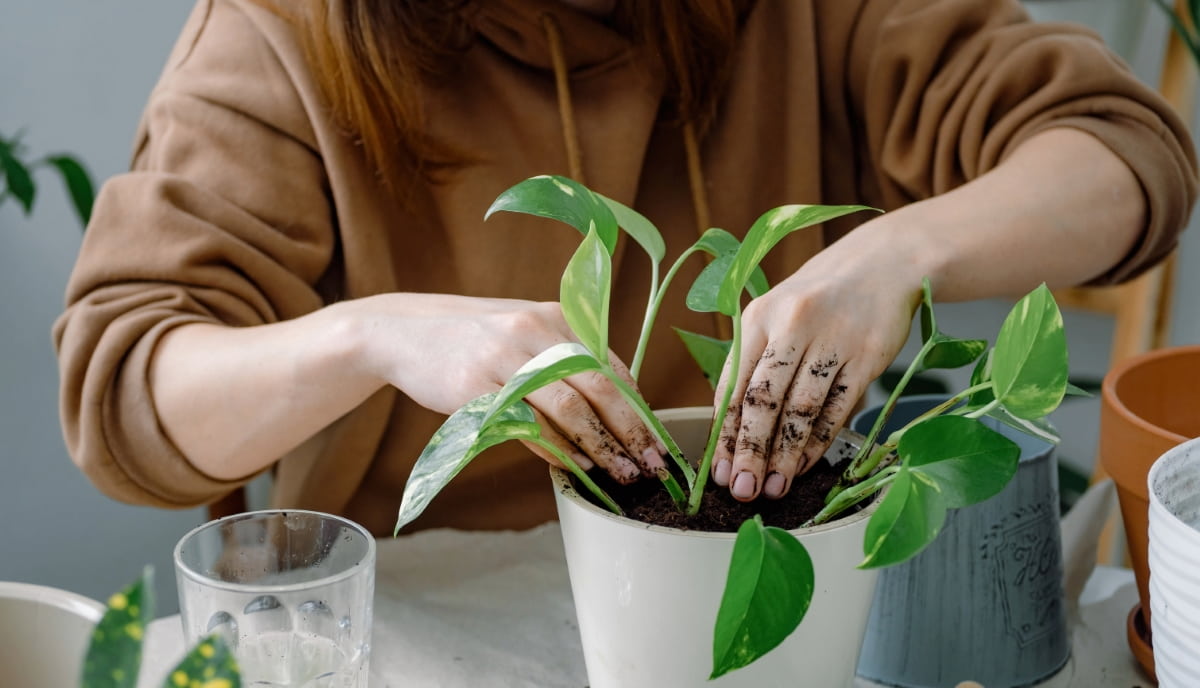In an increasingly urbanized world, where concrete and steel dominate our landscapes, greenery’s natural charm and tranquility often take a back seat. Indoor plants, however, have grown in popularity for their ability to infuse homes and workplaces with a soothing, natural ambiance. In this detailed article, we’ll examine the top 10 indoor plants recognized for their air purification properties, bringing the serenity and freshness of nature to our interiors.
Top 10 Indoor Plants for Air Purification
Snake Plant
Known for its long, pointed, upward-reaching leaves, the snake plant, also called mother-in-law’s tongue, has an architectural aesthetic that adds a stylish edge to any space. It is a hardy plant, thriving in low-light conditions and under brighter indirect light. The snake plant works hard on air purification, particularly at night, releasing oxygen and absorbing carbon dioxide.

Furthermore, it effectively removes toxins such as benzene, formaldehyde, trichloroethylene, and xylene from the air. Its low-maintenance nature and strong air-purifying properties make the snake plant an excellent choice for improving indoor air quality.
Spider Plant
With its arching leaves and tiny white flowers, the spider plant is an incredibly resilient indoor plant, excellent for beginners. Thriving in indirect sunlight and requiring minimal care, it can grow in various indoor conditions. In air purification, the spider plant removes harmful substances such as xylene, toluene, and formaldehyde from the environment.
Studies also suggest it can absorb allergens and microbes from the air, making it a beneficial addition for those suffering from allergies. With its charming appearance and significant air-purifying capabilities, the spider plant is a fantastic asset to any indoor space.
Peace Lily
Peace lilies are not only a beautiful sight with their glossy green leaves and unique white blooms but also warriors of air purification. They can effectively filter out harmful toxins such as formaldehyde, benzene, trichloroethylene, xylene, toluene, and ammonia. Peace lilies also increase room humidity by up to 5%, reducing the incidence of airborne microbes that can lead to allergies. Although they require more care than other indoor plants, peace lilies prefer indirect light and high humidity, making them suitable for bathrooms or kitchens.
Aloe Vera
Aloe Vera, famous for its medicinal properties, is also an effective air purifier. This succulent plant helps cleanse the air of pollutants like benzene and formaldehyde, commonly found in chemical cleaning products. Aloe Vera is a sun-loving plant, easy to care for, and resilient, requiring watering only when the soil is dry. In addition, this remarkable plant not only purifies the air but also shows signs of excess indoor pollution by displaying brown spots on its leaves. This makes Aloe Vera an air-cleaning champion and an environmental health indicator.
Boston Fern
Known for its lush fronds and feathery texture, the Boston Fern is more than just an attractive houseplant. This plant is a powerful air purifier, capable of acting as a natural humidifier and removing toxins such as formaldehyde, xylene, and toluene. This ability to restore moisture to the air can be especially beneficial in homes with dry air. Boston Ferns prefer a cool, humid environment and indirect light, requiring consistent moisture. Although they require extra care, their air-purifying qualities and aesthetic value make them a worthwhile addition to your indoor plant collection.
English Ivy
English Ivy, a versatile and hardy evergreen vine, has a long history as a popular indoor plant. NASA’s Clean Air Study states it is one of the best indoor plants for absorbing formaldehyde. It can also filter benzene, trichloroethylene, xylene, and toluene, effectively purifying indoor air. Moreover, research has shown English Ivy to reduce mold and bacteria in the air, which is potentially beneficial for those with respiratory conditions or allergies. This plant prefers moderate temperatures and not too much sunlight, and with proper care, it can be an amazing and efficient air cleanser.
In case you missed it: Frequently Asked Questions About Indoor Gardening

Bamboo Palm
The Bamboo Palm, alternatively referred to as the Reed Palm, enhances indoor spaces with a sophisticated and tropical ambiance. Its ability to filter formaldehyde, benzene, carbon monoxide, xylene, chloroform, and more stands out. With its capacity to release significant moisture into the air, it can also help maintain indoor humidity levels. This palm prefers indirect light and requires more care in terms of watering and temperature conditions compared to some other indoor plants. Nevertheless, it’s air-purifying abilities and aesthetic charm make it a great indoor companion.
Rubber Plant
Rubber plants, with their broad, glossy leaves, offer a dramatic touch to any indoor setting. Besides their aesthetic appeal, they are potent air purifiers. The plant’s large leaf surface area allows it to absorb and break down chemicals in the air, effectively removing toxins such as formaldehyde, carbon monoxide, and trichloroethylene. Rubber plants are easy to care for, tolerating low light conditions and infrequent watering. Their air-cleaning capabilities and low maintenance make them an excellent choice for indoor spaces.
Golden Pothos
The Golden Pothos, also known as Devil’s Ivy, is a popular houseplant recognized for its cascading vines and heart-shaped leaves. Despite its sinister nickname, this plant is heavenly regarding air purification. It excels at filtering toxins like formaldehyde, xylene, toluene, benzene, and carbon monoxide.
In case you missed it: How to Grow and Care for Orchid Plants Indoors: A Step-By-Step Comprehensive Guide

Golden Pothos is also incredibly easy to care for. It is drought-tolerant, grows well in various lighting conditions, and can tolerate lower temperatures. With its robust resilience and outstanding air purification capabilities, this plant is a perfect selection for beginners seeking indoor greenery.
Dracaena
With its long, wide leaves, Dracaena is an attractive houseplant that comes in various species. Notably, it’s a powerful air purifier that filters pollutants such as benzene, formaldehyde, trichloroethylene, xylene, and toluene. Please be aware that Dracaena plants are poisonous to dogs and cats. Therefore, it is crucial to ensure a secure placement for these plants when living with pets. These plants prefer indirect sunlight and do not require frequent watering, making them relatively easy to maintain.
Conclusion
These ten plants offer more than just a green thumb hobby or decorative additions to your home; they provide significant health benefits by purifying the air you breathe. By integrating these plants into your living spaces, you’re investing in their natural beauty and a healthier living environment. Each plant, with its unique characteristics, filters specific toxins, contributing to cleaner, fresher air.
- Feed Your Flock for Less: Top 10 Tips to Save on Chicken Feed
- Ultimate Guide to Ossabaw Island Hog: Breeding, Raising, Diet, and Care
- Hatching Answers: The Top 10 Reasons Your Chickens Aren’t Laying Eggs
- Eggs and Economics: Breaking Down the Cost of Raising Backyard Chickens
- Defend Your Greens: Proven Methods to Keep Iguanas Out of Your Garden
- Ultimate Guide to Cinnamon Queen Chicken: A Comprehensive Guide for Beginners
- Ultimate Guide to California Tan Chicken: Breeding, Raising, Diet, Egg-Production and Care
- Ultimate Guide to Marsh Daisy Chicken: Breeding, Raising, Diet, and Care
- 10 Types of Chicken Farming Businesses You Can Start for Profits